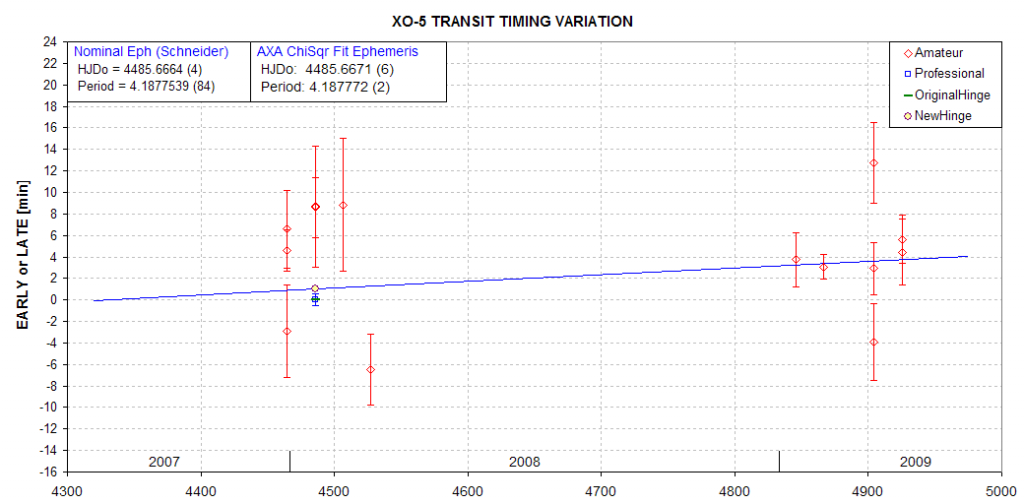
Note: There are many more observations of this exoplanet made by the XO Project "extended team" of amateurs that have not been submitted to the AXA. I tried!
RA = 07:46:52.0, DE = +39:05:40
Season = Jan 15
B = 12.978 ±
0.030, V = 12.135 ± 0.030,
Rc = 11.665 ± 0.030, Ic = 11.306
± 0.05, B-V = 0.843 ±
0.05 (all-sky, all SE are total SE, orhtogonal sum of formal statistical
and estiamted systematic SEs)
HJDo = 4485.6664 (4)
& P = 4.1877539 (84) day (Schneider's Extrasolar Planets Encyclopedia)
HJDo = 4485.6671
(6) and P = 4.187772 (2) days (Suggested new ephemeris based on AXA
fit, below)
Depth = 13.7 ± 0.9 mmag
(R-band)
Length = 3.02 ±
0.07 hr
Fp = 0.27 ± 0.08
(fraction of transit that's partial)
F2 = 0.80 ± 0.15
(ratio of depth at contact #2 to mid-transit)
Impact parameter, b = 0.55 ±
0.09
Nothing unusual yet.

Note: There are many more observations of this exoplanet
made by the XO Project "extended team" of amateurs that have not been
submitted to the AXA. I tried!


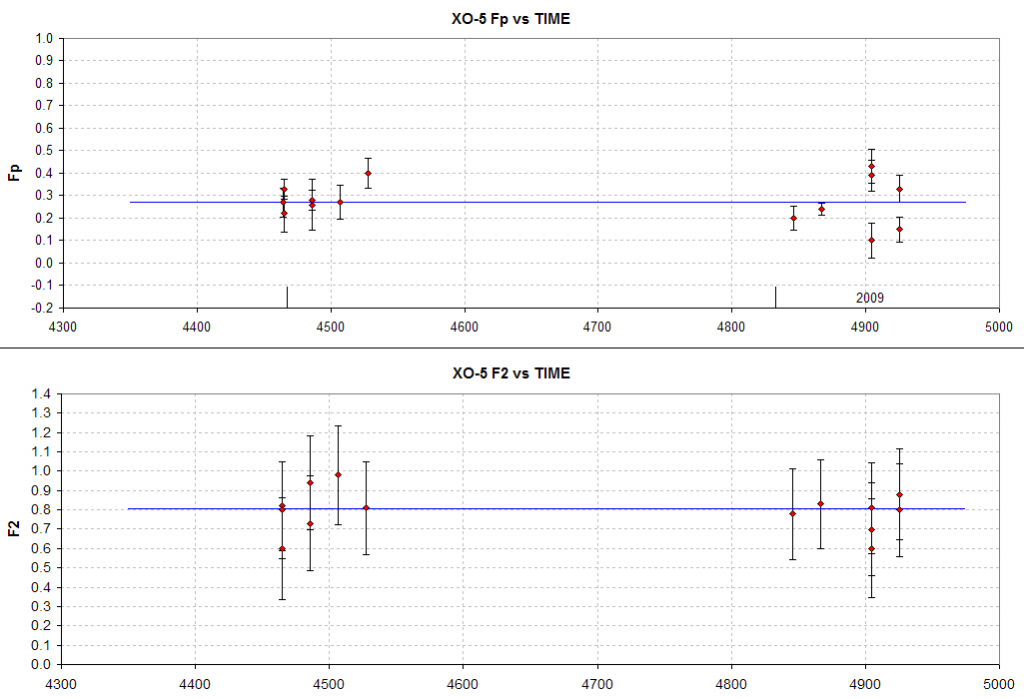
Here's an image showing XO-5 (formerly referred to as "2190") and nearby
stars.

Figure 1. XO-5 (formerly referred
to as "2190"), FOV = 16 x 11 'arc, north up, east left. Star numbers
are shown for the table in the next figure.
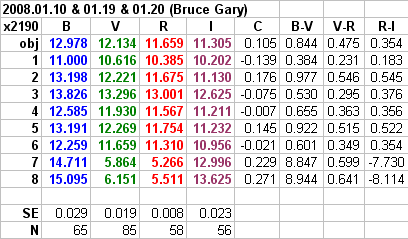
Figure 2. Weighted average magnitudes
of XO-5 ("x2190") and nearby stars using all-sky measurements from
all (3) all-sky observing dates.
Here's a summary of XO-5 all-sky magnitude measurements:
|
XO-5
B-mag = 12.978 ± 0.029 (formal SE) V-mag = 12.135 ± 0.013 (formal SE) R-mag = 11.665 ± 0.013 (formal SE) I-mag = 11.306 ± 0.018 (formal SE) |

| Observing Date |
Landolt Fields |
BLU |
VIS |
RED |
INF |
| 2008.01.10 |
6 |
36 |
37 |
19 |
19 |
| 2008.01.19 |
5 |
29 |
48 |
39 |
37 |
| 2008.01.20 |
2 |
0 |
10 |
8 |
0 |
Estimated total SE values (orthogonal sum of statitical and
systematic SEs) are 0.03, 0.03, 0.03 and 0.05 mag. The B-V SE is
0.05 mag.
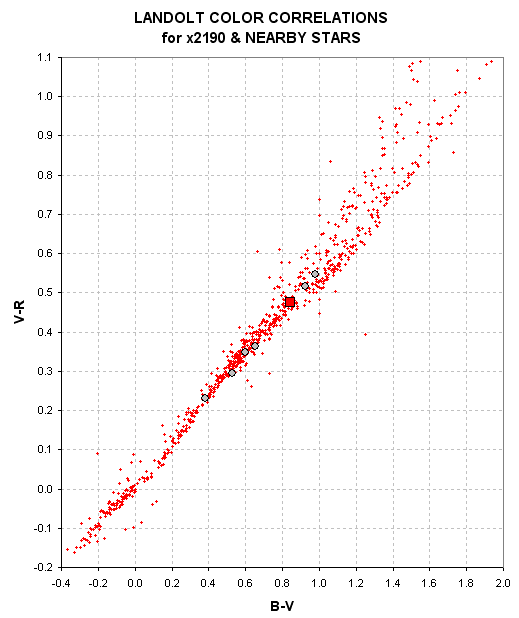
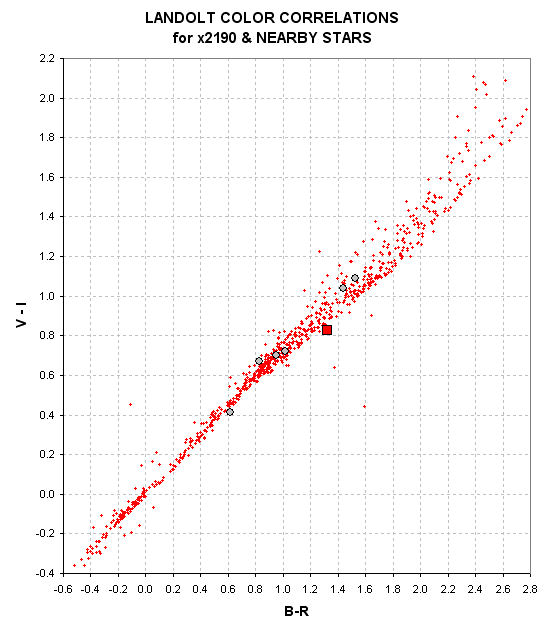
Figure 4. Color-color scatter
diagrams showing that the XO-5 star field has similar
color relationships to those in the set of Landolt stars, thus validating
the quality of the all-sky observations reported here.
These are "internal consistency checks." It passes!
I conclude that interstellar reddening biases the Tycho V-mag
value, and might also influence the conversion from J and K to
V. The two all-sky measurements provide a consistent result that
is free of the interestellar reddening biases. which argues for V-mag
= 9.80 ± 0.03.

WebMaster: Bruce
L. Gary. Nothing on this web page is copyrighted. This site opened:
May 20, 2008. Last Update: 2009.04.15